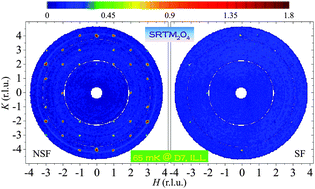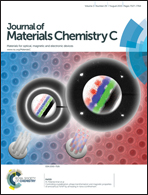Absence of magnetic ordering in the ground state of a SrTm2O4 single crystal
Abstract
We report on the first single crystal study of SrTm2O4. Magnetization measurements along the crystallographic axes of a nearly stoichiometric Sr1.07(3)Tm2.07(6)O4.00(2) sample show either a positive or a negative Curie–Weiss temperature indicative of a competition between antiferromagnetic and ferromagnetic couplings. The field-dependent magnetization suggests an effective Zeeman splitting of the high-level J-multiplets above ∼8.3 T and that the paramagnetism may originate from only one of the two inequivalent Tm3+ crystallographic sites. Our single-crystal polarized neutron scattering and powder unpolarized neutron diffraction data show no evidence for either long- or short-range magnetic order even down to ∼65 mK. We reveal two TmO6 octahedral distortion modes, i.e., one distortion is stronger than the other especially at low temperatures, which is attributed to different crystal fields of the two inequivalent octahedra. Therefore, the compound SrTm2O4 is unique and different from its brethren in the family of frustrated SrRE2O4 (RE = rare earth) magnets. We propose that crystal field anisotropy may dominate over weak dipolar spin interactions in SrTm2O4, thereby leading to a virtually non-ordered magnetic state.


 Please wait while we load your content...
Please wait while we load your content...